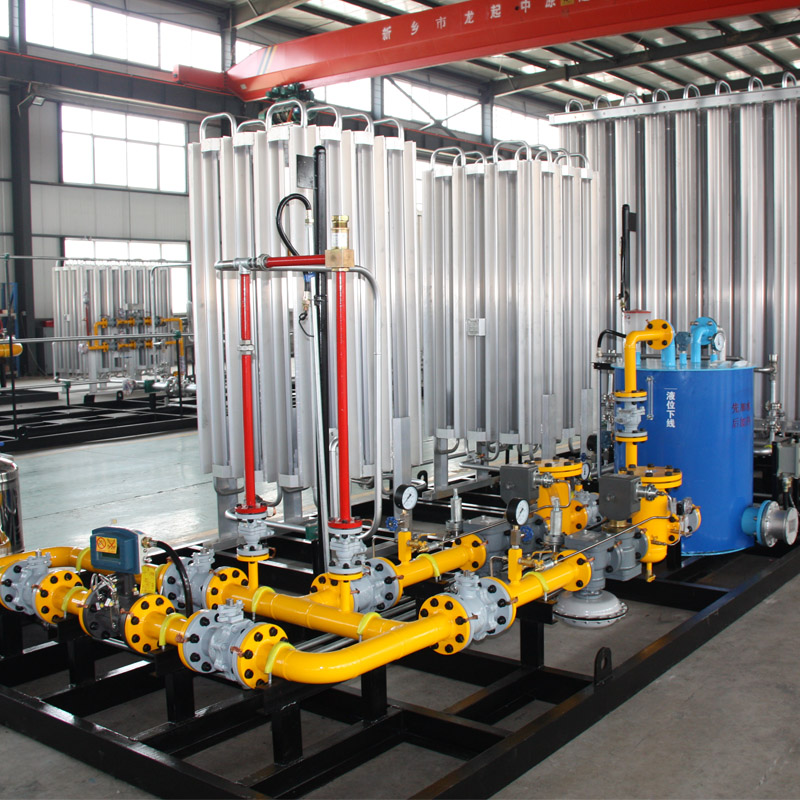
Nov . 30, 2024 01:48
Back to list
Innovative Solutions for Efficient Gasification Technology in Renewable Energy Production
Exploring the World of Gasifiers A Sustainable Energy Solution
In recent years, the quest for sustainable energy solutions has led researchers and engineers to explore various technologies geared towards efficient energy production. One such technology that has gained significant attention is the gasifier. A gasifier converts organic or fossil-based materials into carbon monoxide, hydrogen, and carbon dioxide through a process known as gasification. This process represents a pivotal shift towards renewable energy sources, capturing the interest of both industries and environmentalists alike.
At its core, gasification involves several steps feedstock preparation, drying, pyrolysis, combustion, and reduction. The feedstock—be it biomass, coal, or waste materials—is first dried and then subjected to high temperatures in a low-oxygen environment. This ensures that the materials break down into syngas (synthesis gas), which can be further purified and utilized for various applications, including electricity generation, heating, and as a precursor for synthetic fuels.
Gasifiers come in different designs, and each type has its unique advantages. For instance, the updraft gasifier, which allows air to flow upward through the feedstock, typically produces a more complex gas composition suitable for certain applications. In contrast, the downdraft gasifier, where air flows downward, creates a cleaner syngas with fewer impurities, making it ideal for specific industries looking for high-quality feedstock for internal combustion engines or turbines.
One of the standout features of gasification is its versatility. A wide range of feedstocks can be utilized in gasifiers, which not only includes biomass from agricultural residues, forestry waste, and municipal solid waste but also coal and organic materials. This adaptability is essential, especially as the world grapples with the challenges of waste management and the need for cleaner energy sources. By converting waste materials into valuable energy, gasifiers contribute to the circular economy, allowing materials that would otherwise end up in landfills to be transformed into useful energy.
gasifier

From an environmental perspective, gasification offers several benefits. The process emits fewer pollutants compared to conventional combustion methods, significantly reducing emissions of sulfur oxides and nitrogen oxides. Additionally, when biomass is used as the feedstock, the lifecycle of carbon dioxide emissions can be neutral, as the CO2 released during gasification is roughly equivalent to the amount absorbed by the plants during their growth. Therefore, gasifiers not only produce energy but also help mitigate climate change effects.
Moreover, the rise of decentralized energy systems has further propelled gasification into the limelight. Small-scale gasifiers can be integrated into rural areas or industries, providing localized energy solutions, which enhances energy security and reduces transmission losses. Such systems can empower communities with their energy needs, fostering self-sufficiency and resilience.
However, challenges remain. The initial capital investment for gasification technology can be significant, and technological improvements are necessary to optimize efficiency and reduce costs. Additionally, the economic viability of gasifiers must be carefully evaluated in comparison to other renewable energy sources. Nonetheless, ongoing research and development in gasification technology promise to drive down costs and enhance the efficiency of conversion processes.
In conclusion, gasifiers represent a compelling solution to the dual challenges of energy production and waste management. As the world pivots towards more sustainable energy practices, gasification stands out as a versatile and environmentally friendly alternative. With continued innovation and investment, gasifiers may well play a crucial role in the future of energy, offering a cleaner, more sustainable way to harness the potential of our planet’s resources.
Latest news
-
Safety Valve Spring-Loaded Design Overpressure ProtectionNewsJul.25,2025
-
Precision Voltage Regulator AC5 Accuracy Grade PerformanceNewsJul.25,2025
-
Natural Gas Pressure Regulating Skid Industrial Pipeline ApplicationsNewsJul.25,2025
-
Natural Gas Filter Stainless Steel Mesh Element DesignNewsJul.25,2025
-
Gas Pressure Regulator Valve Direct-Acting Spring-Loaded DesignNewsJul.25,2025
-
Decompression Equipment Multi-Stage Heat Exchange System DesignNewsJul.25,2025

